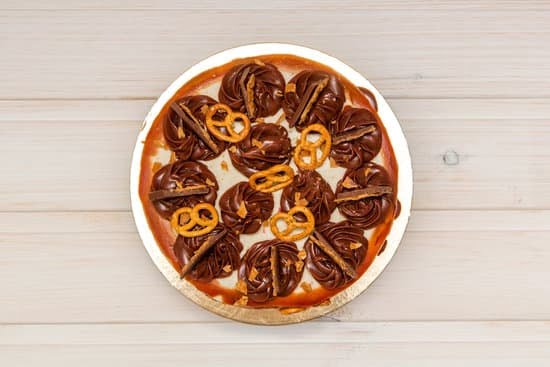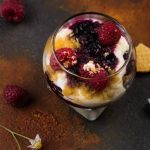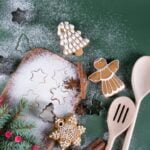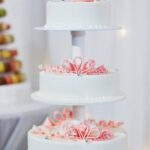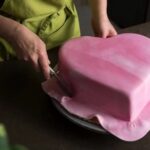Cake decorating is not just about making your creations taste delicious, but also about creating an eye-catching masterpiece that leaves a lasting impression. One way to elevate your cake decorating skills and create stunning designs is by using edible silver paint. In this article, we will show you how to make your own edible silver paint from scratch, as well as provide tips and techniques for achieving the perfect consistency and flawless finish.
Using edible silver paint in cake decorating offers a touch of elegance and sophistication to any creation. Whether you are designing a wedding cake, a birthday cake, or any other special occasion treat, the shimmering silver finish adds a wow factor that is sure to impress your guests.
Before delving into the process of making your own edible silver paint, it is important to understand why it is essential in cake decorating. Many people settle for less by using regular metallic paints that are not safe for consumption. Edible silver paint allows you to achieve the same lustrous effect while ensuring that your creation is safe to eat.
This introduction will guide readers into understanding the art of edible silver paint for stunning cake decorations. It highlights the importance of using such paints in cake decorating while offering an enticing promise of achieving impressive results with homemade recipes.
Understanding the importance of using Edible Silver Paint in Cake Decorating
Edible silver paint is an essential tool for cake decorators who want to add a touch of elegance and glamour to their creations. Using edible silver paint allows you to achieve a stunning metallic finish that gives cakes a professional and eye-catching look. In this section, we will explore the importance of using edible silver paint in cake decorating and why settling for anything less would be a missed opportunity.
One of the main benefits of using edible silver paint is its ability to create a realistic metallic effect on cakes. Traditional food coloring can sometimes fall short when trying to achieve a metallic finish, leaving cakes looking dull or artificial. Edible silver paint, on the other hand, contains actual silver particles that give it a reflective quality similar to real metal. This makes it perfect for creating intricate designs or adding delicate details to your cakes.
Another advantage of using edible silver paint is its versatility. It can be used on various types of cake surfaces, such as fondant, buttercream, or royal icing. Whether you’re working with smooth surfaces or textured ones, edible silver paint can adhere well and provide a smooth and even coverage. It allows for easy blending and shading techniques, making it suitable for both beginners and experienced decorators.
Furthermore, using edible silver paint adds an extra layer of sophistication to your cake designs. It elevates plain cakes into elegant works of art that are sure to impress any audience. Whether you’re creating wedding cakes, birthday cakes, or any other special occasion cakes, incorporating edible silver paint can take your creations to the next level.
| Benefits of using Edible Silver Paint |
|---|
| – Creates a realistic metallic effect |
| – Versatile and can be used on various types of cake surfaces |
| – Adds sophistication and elegance to cake designs |
Gathering the Essential Ingredients
When it comes to creating stunning cake decorations, nothing compares to the sparkle and shine of edible silver paint. Using edible silver paint allows you to add a touch of elegance and glamour to your cakes, making them stand out on any occasion. In this section, we will explore the essential ingredients needed to create the perfect edible silver paint recipe.
To make edible silver paint, you will need a few key ingredients that are safe for consumption and will give your cake a beautiful metallic finish. The primary ingredient is silver luster dust or edible silver powder, which is available at specialty baking stores or online. This dust is made from finely ground non-toxic materials such as mica or titanium dioxide that can be safely ingested.
In addition to silver luster dust, you will also need a food-grade alcohol or clear extract like vodka or clear vanilla extract. The alcohol acts as a solvent for the luster dust, allowing it to dissolve and create a smooth and workable consistency for painting. Make sure to choose an alcohol with a high percentage of alcohol content to ensure quick drying time and prevent smudging.
Another essential ingredient is food-grade brushes or food-safe sponges specifically designed for cake decorating. These tools are essential for applying the edible silver paint evenly onto your cake’s surface, ensuring a flawless finish. It is important to use brushes and sponges that are designated solely for food use to maintain hygiene standards.
By gathering these essential ingredients – silver luster dust, food-grade alcohol or extract, and suitable brushes or sponges – you are well on your way to creating your own homemade edible silver paint for cake decorating. With these ingredients in hand, you can now move on to the next section where we will provide you with a step-by-step guide on how to make your own edible silver paint from scratch.
Step-by-Step Guide
Gather the Necessary Ingredients
To make your own edible silver paint, you’ll need a few key ingredients that are easily accessible. Here’s a list of what you’ll need:
- Silver luster dust: This is the main ingredient that will give your paint its metallic shine. Look for food-grade silver luster dust that is specifically labeled as edible.
- Clear alcohol or lemon extract: These liquids are used to dissolve the luster dust and create a paint-like consistency. Vodka, rum, or lemon extract can all work well for this purpose.
- Food-safe mixing bowl and brush: Choose a bowl that is designated for food use only to mix your paint. Additionally, select a small brush specifically designed for cake decorating to apply the paint onto your cakes.
Preparation and Mixing Process
Once you have gathered all the necessary ingredients, follow these step-by-step instructions to make your own edible silver paint:
- Start by placing about half a teaspoon of silver luster dust into your food-safe mixing bowl.
- Slowly add small amounts of clear alcohol or lemon extract to the luster dust while stirring continuously. Keep adding liquid until you achieve a thick, smooth consistency similar to paint.
- Mix thoroughly until there are no lumps or clumps remaining in the mixture. You may need to adjust the amount of liquid depending on how thick or thin you want your paint to be.
- Once mixed, let the paint sit for about 5-10 minutes to allow any air bubbles to dissipate.
- After it has rested, give it one final stir before using it on your cakes.
Tips for Using Your Edible Silver Paint
Now that you have made your own edible silver paint, it’s time to apply it to your cakes. Here are some tips for achieving professional-looking results:
- Use a clean, dry brush to pick up the paint and apply it onto your cake. Start with a light hand and gradually build up the color and coverage as needed.
- For more control, thin the paint with additional alcohol or lemon extract if necessary. This can help create different shades of silver or achieve a more translucent effect.
- Allow each layer to dry completely before applying additional coats. This will prevent smudging or streaking.
- Experiment with different brush techniques such as stippling, dry brushing, or using a flat brush for different textures and effects.
By following these steps and tips, you’ll be well on your way to creating stunning silver effects on your cakes using your homemade edible silver paint.
Mixing and Achieving the Perfect Consistency
Choosing the Right Mixing Technique
To achieve the perfect consistency for your edible silver paint, it’s crucial to use the right mixing technique. One popular method is to use a small whisk or a fork to blend the ingredients together. This allows for thorough incorporation of all components and ensures a smooth and consistent texture. Remember to mix gently but thoroughly, avoiding any vigorous stirring that could introduce air bubbles into the mixture.
The Importance of Consistency
Consistency plays a significant role in achieving a flawless finish when applying edible silver paint to cakes. If the paint is too thick, it can be challenging to spread evenly and may result in clumps or streaks on the cake’s surface. On the other hand, if the paint is too thin, it may run off or appear sheer, diminishing the desired metallic effect.
Making Adjustments
If you find that your edible silver paint is not reaching the desired consistency, there are some adjustments you can make. If it’s too thick, you can add a few drops of alcohol or clear extract (such as vodka or lemon extract) to thin it out gradually until you achieve the desired texture. Conversely, if your mixture is too thin, you can add more food-grade luster dust gradually until you reach the ideal thickness.
Testing Your Mixture
Before applying your homemade edible silver paint onto your cake masterpiece, it’s essential to test its consistency on a separate surface. This can be a small piece of fondant or even parchment paper.
By doing this, you can ensure that your mixture spreads smoothly without any clumping or streaking. Take note of how well it adheres to the surface and how long it takes to dry-this will help you gauge whether any further adjustments are necessary before applying it onto your cake.
By following these tips and tricks for mixing and achieving the perfect consistency, you’ll be well on your way to creating a flawless finish with your edible silver paint. Remember, practice makes perfect, so don’t be afraid to experiment and fine-tune your mixing technique until you achieve the desired results. With patience and a steady hand, you’ll soon be adding a touch of brilliance to your cake decorating endeavors.
Applying Edible Silver Paint to Cake
Once you have successfully mixed your own edible silver paint from scratch, it’s time to apply it to your cake for that stunning, professional look. Here are some techniques and insider hacks to ensure you achieve the best results:
- Prep your cake: Before applying the edible silver paint, make sure your cake is cool and free of crumbs. You can lightly brush off any loose crumbs with a pastry brush. For a smoother finish, you can also consider applying a thin layer of buttercream or ganache as a base coat.
- Choose your application method: There are different methods for applying edible silver paint, depending on the desired effect. Some popular choices include using a food-safe spray gun, an airbrush machine, or brushes. Each method offers its own unique finish, so experiment to find the one that works best for you.
- Use stencils for precision: If you want to create specific designs or patterns on your cake with the edible silver paint, stencils can be incredibly useful. Place the stencil on the cake surface and hold it firmly in place while gently applying the paint with an airbrush machine or brush. Lift the stencil carefully to reveal a beautifully detailed design.
- Embrace layering: Achieving depth and dimension is key when using edible silver paint. To add depth to your design, start by applying a thin layer of silver paint all over the cake’s surface as a base coat. Allow it to dry before adding additional layers or details in different shades or patterns for a more visually striking result.
- Experiment with different finishes: Edible silver paint can create various finishes depending on how it’s applied. For a smooth metallic sheen, apply an even layer of silver paint over the entire cake surface using a brush or airbrush machine. For a brushed metal effect, use gentle strokes in one direction. You can also try blotting the paint with a dry brush for a textured look.
Remember, practice makes perfect when it comes to applying edible silver paint to your cakes. Don’t be afraid to experiment with different techniques and methods to achieve the desired professional-looking results. With time, patience, and a little creativity, you’ll be able to create stunning, silver masterpieces that are sure to amaze everyone who sees them.
Drying and Curing
After applying the edible silver paint to your cake, it is essential to properly dry and cure it to ensure a long-lasting finish. Drying and curing are important steps in the process that help set the paint and prevent smudging or rubbing off. Here are some tips and techniques for achieving a durable and professional-looking result:
- Allow Sufficient Drying Time: Once you have applied the edible silver paint, it is crucial to give it enough time to dry completely. The drying time will vary depending on factors such as humidity, temperature, and the thickness of the paint layer. As a general rule, allow at least 4-6 hours for the silver paint to dry before handling or decorating further.
- Proper Air Circulation: To aid in the drying process, ensure proper air circulation around the painted cake. You can achieve this by placing a fan nearby or leaving the cake in a well-ventilated area. This will help speed up the drying time and promote an even finish.
- Curing for Longevity: Curing refers to allowing the painted cake to sit undisturbed for an extended period, which helps enhance the durability of the edible silver paint. Ideally, let your decorated cake sit untouched for at least 24 hours before storing or transporting it. During this curing period, make sure not to cover or wrap the cake tightly as it may cause moisture buildup and compromise the finish.
To summarize:
- Allow sufficient drying time of 4-6 hours before handling.
- Ensure proper air circulation around the painted cake.
- Let the decorated cake sit undisturbed for at least 24 hours for optimal curing.
By following these steps, you can ensure that your edible silver paint masterpiece lasts longer and maintains its stunning appearance even after transportation or storage. Remember that proper drying and curing are key factors in achieving a professional and durable finish that will impress everyone who sees your cake.
Alternative Uses for Edible Silver Paint
Edible silver paint isn’t just limited to cake decorating. Its versatility extends beyond the world of confectionary, making it a valuable tool for various creative projects. Here are some alternative uses for edible silver paint that can help you unlock its full potential:
- Desserts and Pastries: While cake decorating might be the most obvious use for edible silver paint, don’t forget about other desserts and pastries. From cookies and cupcakes to macarons and pies, adding a touch of silver can instantly elevate the presentation of any sweet treat.
- Drinks and Cocktails: Get creative with your beverages by using edible silver paint to decorate the rims of glasses or add shimmering designs to cocktails. Whether you’re hosting a fancy party or simply want to impress your guests, this extra touch will make your drinks stand out.
- Home Decor: Edible silver paint can also be used in home decor projects. Transform ordinary objects into stylish accents by painting picture frames, vases, candle holders, or even furniture with a metallic silver finish. The shimmering effect adds an elegant touch to any room.
- Arts and Crafts: If you enjoy arts and crafts, edible silver paint can be used in various projects. It’s perfect for adding highlights and metallic accents to paintings or sculptures, giving them a unique and eye-catching look.
Remember, when using edible silver paint for alternative purposes outside of cake decorating, ensure that the surfaces it comes into contact with are safe for consumption if being used on food or beverages.
| Alternative Uses | Description |
|---|---|
| Desserts and Pastries | Adds an elegant touch to various sweet treats |
| Drinks and Cocktails | Decorates drink rims or adds shimmering designs to cocktails |
| Home Decor | Transforms ordinary objects into stylish accents with a metallic silver finish |
| Arts and Crafts | Perfect for adding highlights and accents to paintings or sculptures |
Troubleshooting Common Issues
While making edible silver paint may seem like a straightforward process, there can be some common issues that arise along the way. To help you overcome these challenges and achieve the desired silver shine on your cakes, we have gathered expert advice and tips.
One common issue that cake decorators face when using edible silver paint is streakiness or uneven coverage. This can happen if the paint is not mixed properly or if it is applied too thinly. To avoid this problem, make sure to mix your paint thoroughly until it has a smooth consistency.
If needed, you can add a small amount of food-grade alcohol to thin out the paint for easier application. When applying the paint, use gentle brush strokes in one direction for even coverage.
Another issue that may arise is clumping or caking of the edible silver paint. This can occur if the ingredients are not properly measured or mixed together. To prevent clumping, ensure that you accurately measure all the ingredients as stated in the recipe. Mix them together slowly and gradually to incorporate them evenly. If you still experience clumping, strain the paint through a fine mesh sieve or cheesecloth before using it.
Additionally, some cake decorators may find that their edible silver paint does not dry evenly or takes longer than expected to dry. This can be due to environmental factors such as humidity or temperature. To speed up drying time and achieve an even finish, consider using a fan to increase air circulation in your workspace. You can also place your cake in a cool area with low humidity to promote quicker drying.
By following these troubleshooting tips and expert advice, you will be able to overcome common issues when working with edible silver paint and achieve the desired silver shine on your cake decorations. Remember that practice makes perfect, so don’t be discouraged if you don’t get it right on your first attempt. With patience and persistence, you will become a master at using edible silver paint to create stunning and dazzling cake designs.
Conclusion
In conclusion, mastering the art of edible silver paint opens up a whole new world of possibilities for cake decorators. By understanding the importance of using edible silver paint and gathering the essential ingredients, you can create stunning cakes that truly shine. The step-by-step guide provided in this article allows you to make your own edible silver paint from scratch and achieve a flawless finish with the perfect consistency.
Applying edible silver paint to your cakes requires some techniques and insider hacks, but with practice, you can achieve professional-looking results. It’s important to allow your masterpiece to dry and cure properly to ensure its longevity. The final steps are crucial in ensuring that your edible silver paint masterpiece lasts and maintains its beautiful shine.
In addition to cake decorating, edible silver paint can also be used for a variety of other purposes. Its versatility allows you to explore different creative projects, such as adding sparkle to cookies, cupcakes, or even chocolate desserts. Don’t be afraid to experiment and unlock the full potential of this edible dazzle.
Finally, if you encounter any challenges or issues during the process, expert advice is readily available to help you overcome them and achieve the desired silver shine. Embrace the magic of edible silver paint and let it elevate your cake decorating skills to new heights.
With patience and practice, you will be able to create visually stunning cakes that are sure to impress anyone who sees them. So go ahead and embrace this enchanting technique – it’s time to let your creativity shine.
Frequently Asked Questions
How do you make edible paint for cakes?
Making edible paint for cakes is quite simple and can be done using basic ingredients. The most common method involves combining food coloring with a small amount of water or clear alcohol, such as vodka or everclear. Start by choosing your desired colors and adding a few drops of food coloring into separate containers.
Then, gradually add water or alcohol to each container until the consistency becomes similar to that of paint. Mix well to ensure the color is evenly distributed throughout the liquid. It’s important to note that using too much liquid may result in runny paint, so it’s best to add it gradually until you achieve the desired thickness.
How do you make edible glitter paint?
Creating edible glitter paint adds a touch of sparkle and glamour to cakes, and it can be easily made at home. To make edible glitter paint, begin by mixing edible glitter dust with a clear liquid ingredient such as water or vodka. Choose a coordinating color of edible glitter dust that matches your desired effect and place it in a small bowl.
Add a few drops of the chosen liquid slowly while stirring continuously until the mixture reaches a thick yet spreadable consistency, similar to paint. Keep in mind that different brands of glitter dust may vary in texture and intensity, so adjust the amount accordingly to achieve your desired look.
How do you make edible paint for cakes without alcohol?
If you prefer not to use alcohol in making edible paint for cakes or simply don’t have any available, there are alternative methods to create vibrant colors without compromising on taste and safety. One option is using fruit or vegetable juices as base liquids instead of alcohol or water. For instance, beet juice can yield a beautiful reddish-pink hue while spinach juice might result in green tones for your paint.
Consider experimenting with different natural pigments until you reach the desired color intensity. Remember that these natural alternatives may affect the flavor profile slightly but will still produce safe and colorful paints for your cakes without alcohol involved!

Welcome to our cake decorating blog! My name is Destiny Flores, and I am the proud owner of a cake decorating business named Cake Karma. Our mission is to provide delicious, beautiful cakes for all occasions. We specialize in creating custom cakes that are tailored specifically to each customer’s individual needs and tastes.

